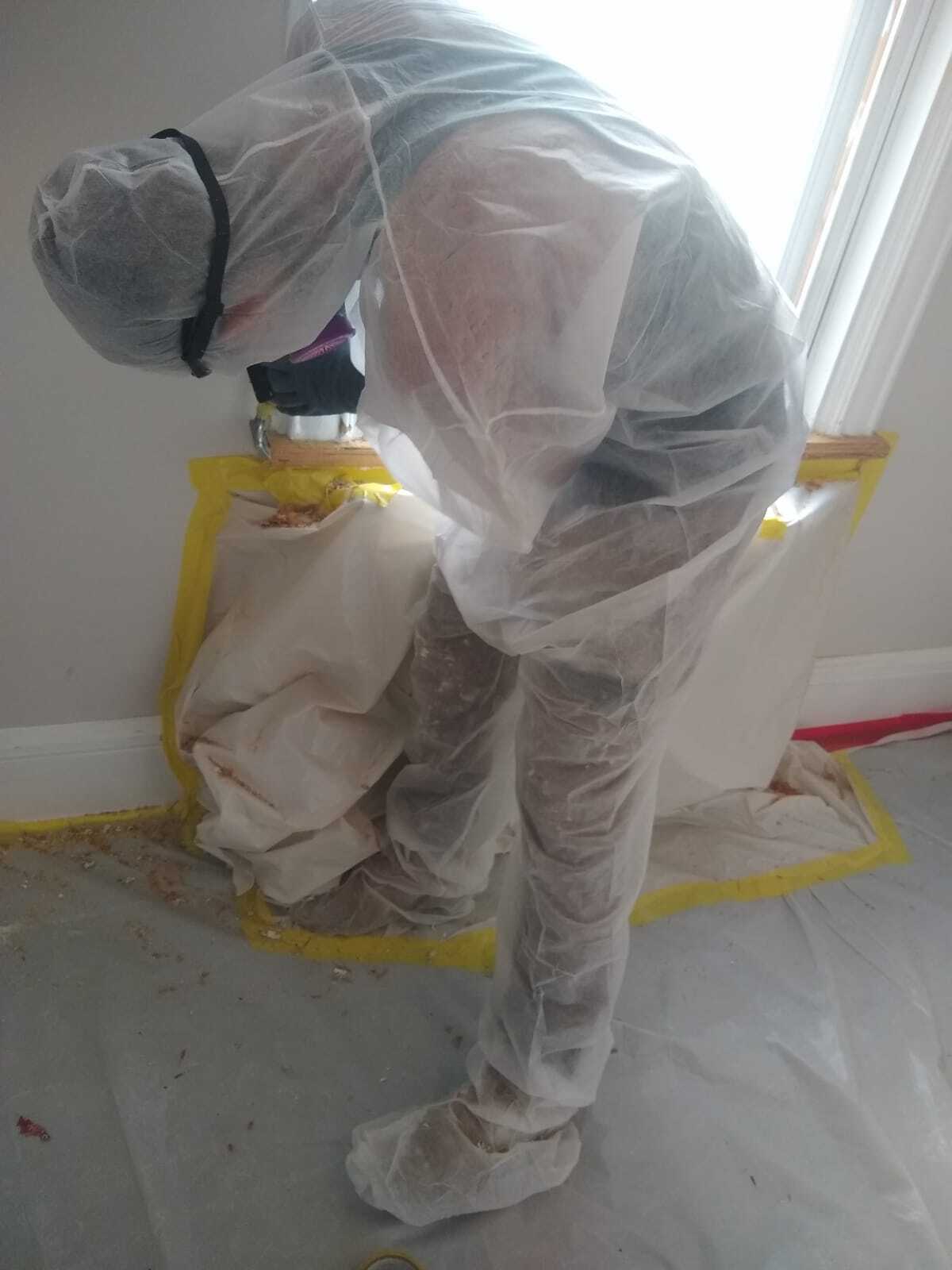Lead Paint Removal Service-- NYC's Trusted Solutions for Lead Security
Lead Paint Removal Service-- NYC's Trusted Solutions for Lead Security
Blog Article
Ideal Practices for Making Sure Safe and Detailed Lead Infraction Reduction
Resolving lead violation reduction calls for a multi-faceted technique to make certain both safety and security and compliance. It's the final clearance procedure, including extensive assessments and research laboratory testing, that absolutely verifies a lead-free environment, making sure long-term safety. How do these techniques interconnect to ensure comprehensive lead reduction?

First Assessment
Carrying out an initial analysis is a crucial initial step in lead infraction abatement. This phase includes a detailed assessment of the residential or commercial property to recognize the presence, degree, and particular areas of lead-based risks. Qualified experts, such as qualified lead examiners or risk assessors, must perform a thorough website examination, utilizing devices like X-ray fluorescence (XRF) analyzers to properly detect and gauge lead concentrations in paint, dust, dirt, and water.
The evaluation should also include a review of the structure's background, previous records, and any type of grievances or health and wellness concerns reported by owners - Lead Removal Contractors. Documenting the searchings for carefully is essential, as these records develop the basis for establishing a reliable abatement approach. A thorough assessment also includes sampling and laboratory analysis, which are important to verify the presence of lead and overview subsequent actions
In addition, it is crucial to communicate the results transparently to all stakeholders, including homeowner, occupants, and regulative authorities. By ensuring that the preliminary assessment is performed with accuracy and rigor, experts can lay a solid structure for a targeted and efficient lead reduction process, ultimately guarding public health and making certain compliance with regulative standards.
Appropriate Control
Appropriate containment is essential to protect against the spread of lead pollutants throughout abatement tasks. Efficiently managing containment lessens the danger of lead dust and debris migrating to non-work locations, thus securing both the atmosphere and people outside the immediate work zone.

Regular examinations of the control area are required to look for violations or weaknesses in the obstacle. Any type of determined concerns should be quickly dealt with to preserve the honesty of the containment. By sticking to these practices, abatement projects can efficiently regulate lead contamination and alleviate connected wellness threats.
Employee Defense
Making sure worker defense is vital during lead reduction tasks to protect against occupational exposure to dangerous lead bits. Essential measures include using personal safety tools (PPE) such as respirators, handwear covers, and Lead Paint Removal Service full-body suits specifically developed to obstruct lead dust and fumes. Employees should go through extensive training on the proper use and maintenance of PPE, consisting of healthy screening for respirators to make certain optimum effectiveness.
Design controls, such as neighborhood exhaust ventilation systems, are important in minimizing airborne lead focus in the workplace. Management controls must likewise be implemented, including restricting the duration of direct exposure and turning workers to decrease individual exposure times. Regular medical surveillance and biological surveillance are indispensable for very early discovery of lead absorption, allowing timely treatment and therapy.
Furthermore, establishing a purification procedure is vital. Employees go have to follow rigorous purification procedures before breaks and at the end of their change to stop lead dirt from being carried outside the workspace. This consists of detailed hand and face cleaning with lead-specific cleaner and changing out of infected clothes.
Careful Cleaning
Maintaining a safe workplace extends past worker defense and encompasses precise clean-up to make sure lead fragments are extensively eliminated from the website. The procedure of meticulous cleanup is crucial in avoiding the recontamination of the mellowed out area and safeguarding both existing and future residents.
To accomplish a thorough cleaning, all job areas have to be systematically decontaminated. This includes the usage of specialized HEPA (High-Efficiency Particulate Air) vacuum and wet-wiping methods to capture and remove great lead dust that may have chosen surface areas. It is necessary to clean up all straight surface areas, consisting of floorings, home window sills, and kitchen counters, as well as vertical surface areas that may have trapped lead particles.
Employees have to use proper personal protective equipment (PPE) throughout cleanup to avoid direct exposure to residual lead dust. Used cleaning products such as wipes, sponges, and mop heads need to be gotten rid of according to harmful waste disposal regulations.

Last Clearance
Last clearance is the crucial ending phase of lead abatement that figures out whether the website is risk-free for reoccupation. This critical step involves thorough examination and screening to confirm that all lead hazards have been successfully eliminated.

Last clearance testing not just safeguards future occupants but likewise makes certain conformity with neighborhood, state, and federal regulations. Additionally, it acts as a recorded recognition of the abatement professional's adherence to industry finest methods. Guaranteeing a detailed and successful final clearance is necessary in safeguarding public wellness and promoting count on the reduction process.
Verdict
Guaranteeing safe and comprehensive lead infraction reduction demands a multifaceted approach including initial assessments with innovative detection techniques, efficient control approaches, rigid worker security procedures, and thorough clean-up procedures. The final clearance stage, including in-depth examinations and research laboratory screening, is critical to verify conformity with EPA standards. Adherence to these best practices ensures a risk-free environment for passengers, reduces health and wellness dangers, and promotes regulatory requirements, consequently promoting public wellness and safety in lead-affected locations.
Report this page